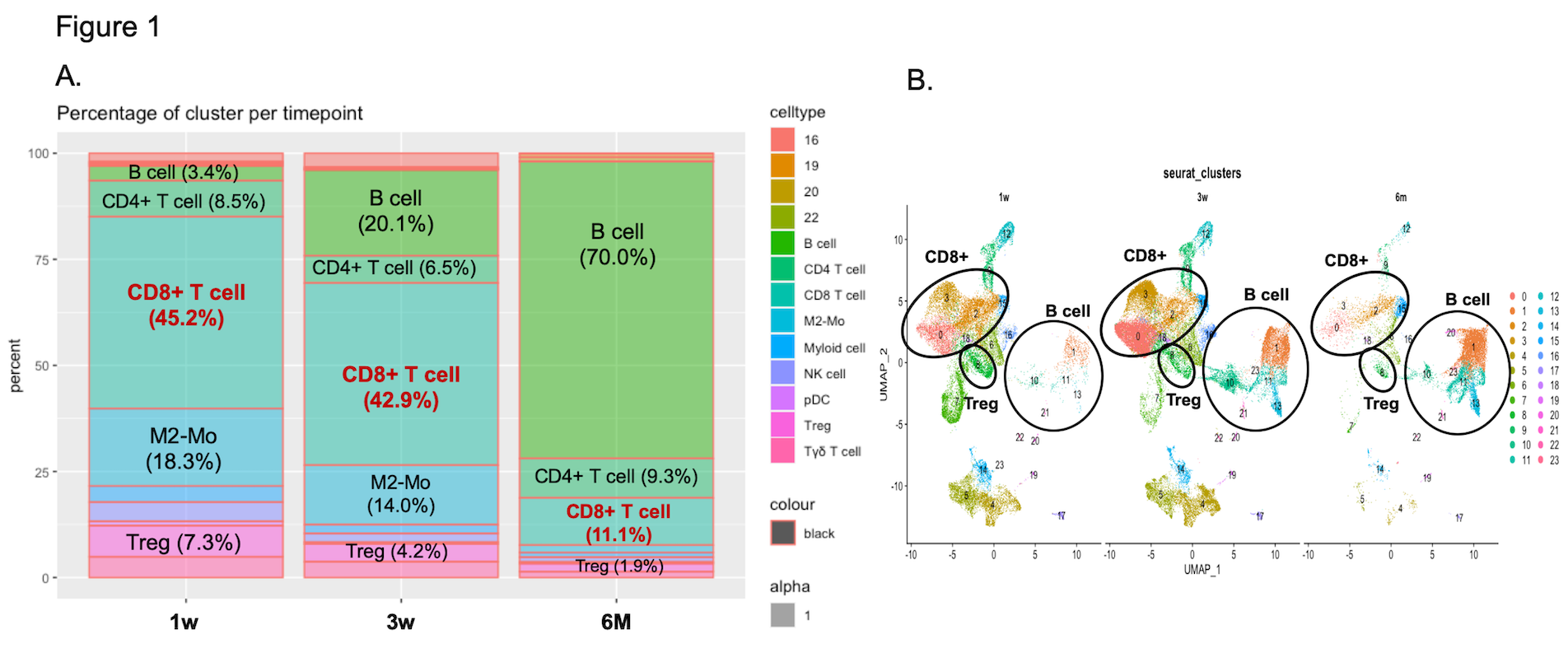Infiltrating CD8+ Cytotoxic T Cells Are Converted to a Regulatory Phenotype in Accepted Kidney Allografts
1Center for Transplantation Sciences, Massachusetts General Hospital, Boston, MA, 2Boston Children's Hospital, Boston, MA, 3Department of Pathology, Massachusetts General Hospital, Boston, MA, 4Department of Surgery, Emory University, Atlanta, GA
Meeting: 2022 American Transplant Congress
Abstract number: 1250
Keywords: Kidney transplantation, Mice, T cells, Tolerance
Topic: Basic Science » Basic Science » 10 - Treg/Other Regulatory Cell/Tolerance
Session Information
Session Name: Treg/Other Regulatory Cell/Tolerance
Session Type: Poster Abstract
Date: Monday, June 6, 2022
Session Time: 7:00pm-8:00pm
 Presentation Time: 7:00pm-8:00pm
Presentation Time: 7:00pm-8:00pm
Location: Hynes Halls C & D
*Purpose: Mouse kidney allografts are spontaneously accepted in select, fully-mismatched donor-recipient strain combinations (i.e. DBA/2J to C57BL/6 (B6)) without any immunosuppressive drug treatment. We have shown that the accepted kidney allografts develop localized aggregates of various lymphocytes, including Foxp3+ regulatory T cells (Treg), that represent novel regulatory Tertiary Lymphoid Organs (rTLOs). scRNAseq data show CD8+ T cells are the predominant infiltrating immune cell population 1-3 weeks following transplantation. Using scRNAseq data from different timepoints post-transplantation, we have characterized these cells through gene expression analysis.
*Methods: We performed life sustaining DBA/2 to WT.B6 kidney transplants. Cells were isolated at 1 week (n=3), 3 weeks (n=5), and 24 weeks (n=3) post-transplant, and intrarenal CD45+ cells were sorted and analyzed by scRNAseq. The cDNA libraries underwent Next Generation Sequencing and the data was analyzed using the Seurat software package in Rstudio.
*Results: Gene expression analysis confirmed that the major immune cell population at 1 week and 3 weeks post-transplantation consists of CD8+ T cells but that by 24 weeks (6 months), the CD8+ T cell population dropped from 43% to 11%, at which point the B cell population becomes the dominant population (70%) (Figure 1A,1B). Gene expression analysis of the CD8+ T cell population at 1 week showed significant levels of Gzmb (granzyme B) gene expression but by 3 weeks, Gzmb expression waned within the CD8+ cell cluster. However, expression of regulatory genes, specifically Fgl2, Il2rb (CD122), and Pdcd1 (PD-1), in the CD8+ T cells are markedly increased. This pattern was not observed in splenocytes from the recipient.
*Conclusions: The shift in the gene expression of infiltrating CD8+ T cells from a cytotoxic to regulatory phenotype suggests a novel mechanism that contributes to the maintenance of natural tolerance in this system, in addition to CD8+ T cell exhaustion.
To cite this abstract in AMA style:
Yokose T, Szuter ES, Guinn MT, Ge J, Rosales I, Ford M, Russell PS, Cuenca AG, Madsen JC, Colvin RB, Alessandrini A. Infiltrating CD8+ Cytotoxic T Cells Are Converted to a Regulatory Phenotype in Accepted Kidney Allografts [abstract]. Am J Transplant. 2022; 22 (suppl 3). https://atcmeetingabstracts.com/abstract/infiltrating-cd8-cytotoxic-t-cells-are-converted-to-a-regulatory-phenotype-in-accepted-kidney-allografts/. Accessed December 29, 2025.« Back to 2022 American Transplant Congress

